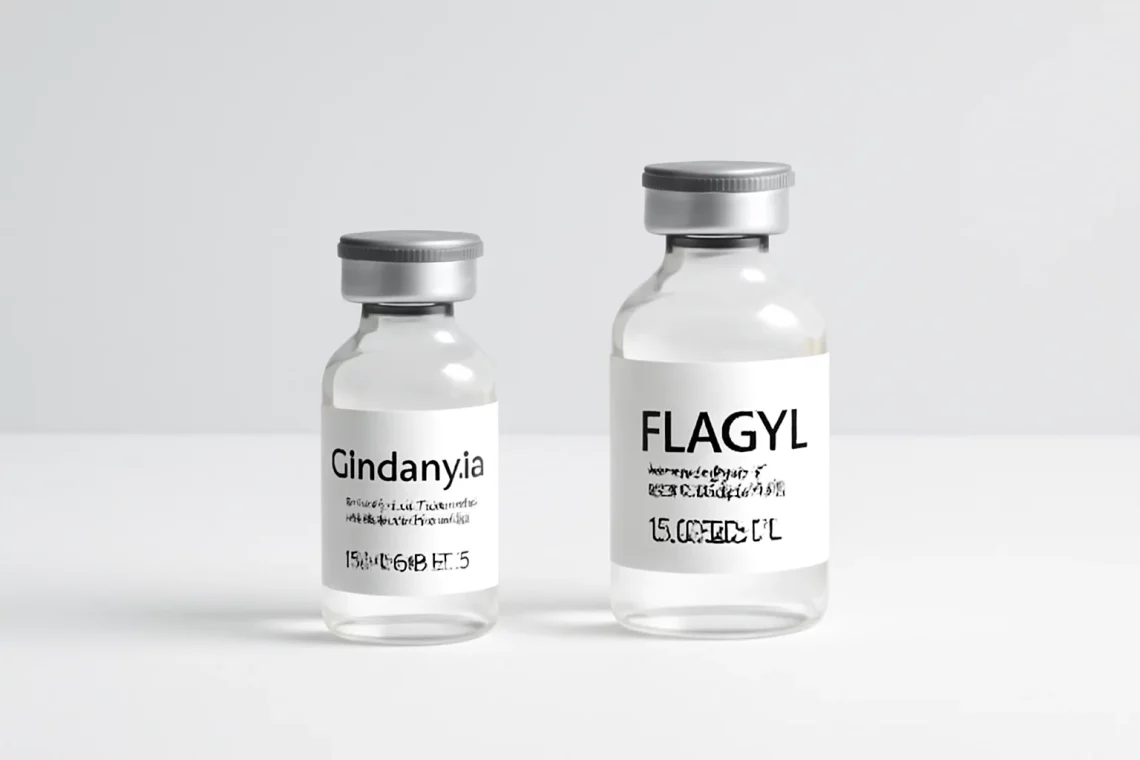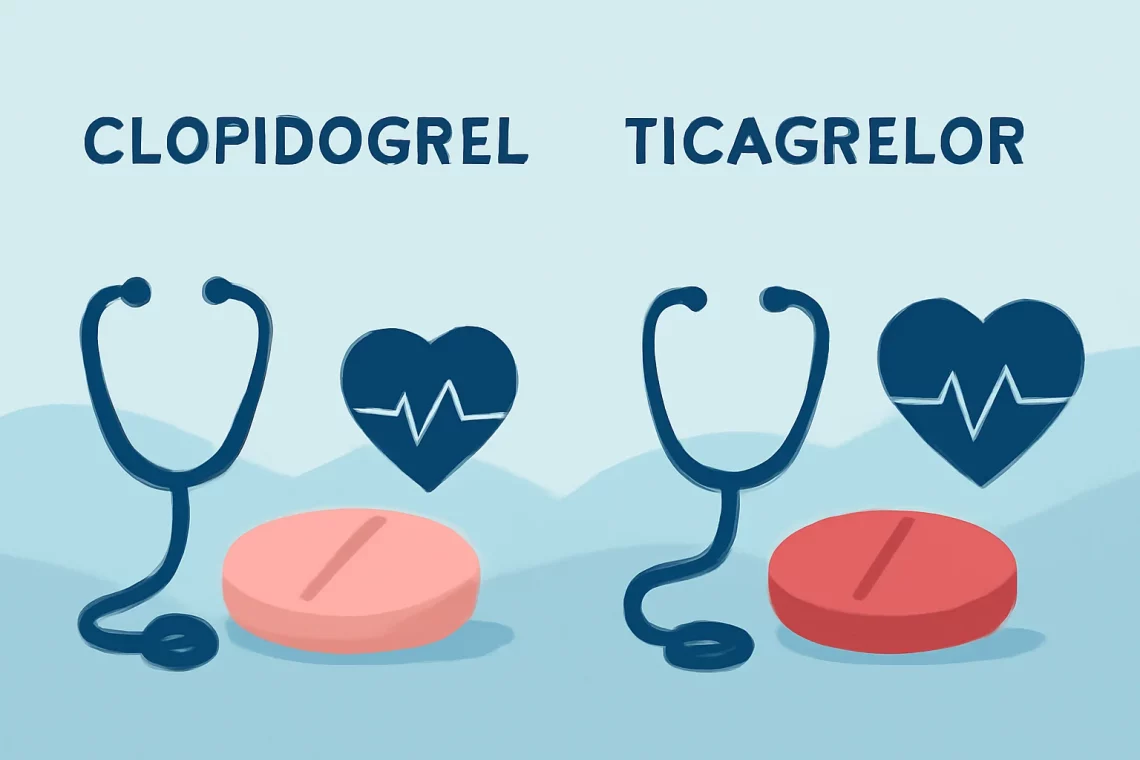-
Albuterol vs Salbutamol: Understanding Their Differences and Uses
Albuterol and salbutamol are two medications widely used in the treatment of respiratory conditions, particularly asthma and chronic obstructive pulmonary disease (COPD). Both drugs serve as bronchodilators, which means they work by relaxing the muscles in the airways, allowing the airways to open up more fully, thereby easing breathing. Despite their similar functions, there are distinct differences between the two that can affect their usage, effectiveness, and overall patient experience. Understanding these differences is crucial for anyone managing a respiratory condition or considering treatment options. In the realm of respiratory medications, the choice often boils down to personal preference, specific health needs, and physician recommendations. Factors like how quickly the…
-
Atomoxetine vs Guanfacine: Which is Better for ADHD Treatment?
Attention-deficit/hyperactivity disorder (ADHD) is a complex neurodevelopmental disorder that affects both children and adults. It is characterized by symptoms such as inattention, hyperactivity, and impulsivity, which can significantly impact daily life and functioning. As awareness of ADHD continues to grow, so does the demand for effective treatment options. While behavioral therapies are often recommended, pharmacological interventions are also frequently utilized. Among these, Atomoxetine and Guanfacine have emerged as two popular non-stimulant medications. Atomoxetine, a selective norepinephrine reuptake inhibitor, is primarily used in the treatment of ADHD. It works by increasing the levels of norepinephrine in the brain, which helps improve attention and decrease impulsivity and hyperactivity. On the other hand,…
-
Clindamycin vs Flagyl: A Comprehensive Comparison of Antibiotics
Clindamycin and Flagyl are two commonly prescribed antibiotics used to treat various bacterial infections. Their effectiveness and appropriate use depend on the type of bacteria involved and the specific condition being treated. Clindamycin belongs to the lincosamide class of antibiotics, while Flagyl, or metronidazole, is classified as a nitroimidazole. Both medications play crucial roles in modern medicine, particularly in the management of infections that are resistant to other antibiotics. Understanding the differences and similarities between these two antibiotics can aid healthcare professionals and patients alike in making informed decisions regarding their treatment options. Each medication has unique indications, mechanisms of action, and side effects, which can influence the choice of…
-
Doxycycline vs Levaquin: Key Differences and Uses Explained
Doxycycline and Levaquin are two antibiotics commonly prescribed to treat a variety of bacterial infections. Both medications have distinct mechanisms of action, efficacy profiles, and side effects, which can significantly influence their use in clinical settings. Understanding the differences between these two drugs is vital for healthcare professionals and patients alike when making informed decisions about treatment options. The choice between Doxycycline and Levaquin may depend on various factors, including the type of infection being treated, patient medical history, and potential drug interactions. Doxycycline, a tetracycline antibiotic, is effective against a broad spectrum of bacteria and is often utilized for infections such as acne, respiratory tract infections, and certain sexually…
-
Vraylar vs Zyprexa: A Comprehensive Comparison of Two Antipsychotics
Mental health issues have become increasingly prevalent in today’s society, prompting a growing need for effective treatment options. Among the various medications available for managing conditions such as schizophrenia and bipolar disorder, Vraylar and Zyprexa stand out as popular choices. These medications belong to a class known as atypical antipsychotics, which are designed to address the symptoms often associated with these mental health disorders. Understanding the differences between Vraylar and Zyprexa is crucial for patients, caregivers, and healthcare professionals alike. Each medication has its unique mechanism of action, side effects, and efficacy profiles, making it essential to evaluate them carefully in the context of individual patient needs. In this discussion,…
-
Metoprolol vs Labetalol: Key Differences and Clinical Uses Explained
Metoprolol and labetalol are both beta-blockers, a class of medications widely used in the management of cardiovascular conditions. These drugs work by blocking the effects of adrenaline on the beta receptors in the heart, leading to reduced heart rate and blood pressure. While both medications serve similar purposes, they differ in their pharmacological profiles, indications, side effects, and mechanisms of action. Understanding these differences is crucial for healthcare providers and patients alike, as it can significantly impact treatment outcomes. Metoprolol is often prescribed for conditions such as hypertension, angina, and heart failure, while labetalol is frequently used for managing high blood pressure, particularly in acute settings. The choice between these…
-
Cyclobenzaprine vs Flexeril: Understanding the Differences and Uses
Cyclobenzaprine and Flexeril are terms that often arise in discussions about muscle relaxants used to alleviate discomfort from muscle spasms and pain. While many people may use these terms interchangeably, it’s essential to understand that they refer to the same medication. Cyclobenzaprine is the generic name, while Flexeril is the brand name under which it is marketed. This medication is widely prescribed to help manage acute musculoskeletal conditions, providing relief by acting on the central nervous system. Muscle pain can significantly impact an individual’s quality of life, leading to discomfort and limiting mobility. As a result, the demand for effective treatments continues to grow. Cyclobenzaprine works by interfering with the…
-
Clopidogrel vs Ticagrelor: Which Antiplatelet Drug is Better?
Clopidogrel and ticagrelor are two antiplatelet medications commonly prescribed for patients at risk of thrombotic cardiovascular events, such as heart attacks and strokes. Both medications play a critical role in managing cardiovascular diseases by preventing the aggregation of platelets, which can lead to the formation of blood clots. While they share a common goal of reducing the risk of serious cardiovascular events, they differ in their mechanisms of action, dosing, and potential side effects. Understanding the nuances between clopidogrel and ticagrelor is essential for healthcare providers and patients alike. As cardiovascular diseases remain a leading cause of morbidity and mortality worldwide, the choice of antiplatelet therapy can significantly impact patient…
-
Dexmethylphenidate vs Methylphenidate: Key Differences Explained
Dexmethylphenidate and methylphenidate are two medications commonly used to treat attention deficit hyperactivity disorder (ADHD) and narcolepsy. Both drugs belong to the class of stimulants and are known for their ability to enhance focus, attention, and impulse control. While they share many similarities in terms of their mechanisms of action, chemical structures, and therapeutic uses, there are key differences that can influence a physician’s choice between the two. Understanding these differences is crucial for patients, caregivers, and healthcare providers alike. The popularity of these medications has surged in recent years, leading to increased awareness and discussions around their efficacy, potential side effects, and the implications of their use. As mental…
-
Doxycycline vs Tetracycline: Key Differences and Uses Explained
Doxycycline and tetracycline are both part of the tetracycline class of antibiotics, which are widely used to treat a variety of bacterial infections. These medications have been instrumental in the fight against infectious diseases due to their ability to inhibit bacterial protein synthesis, thereby preventing the growth and reproduction of bacteria. The effectiveness of these antibiotics has made them a staple in both clinical and outpatient settings. However, while they share a common origin and mechanism of action, doxycycline and tetracycline exhibit significant differences in terms of their pharmacokinetics, spectrum of activity, and potential side effects. Understanding these differences is crucial for healthcare providers when determining the most appropriate treatment…







































